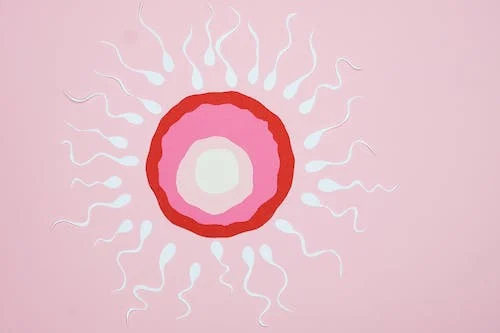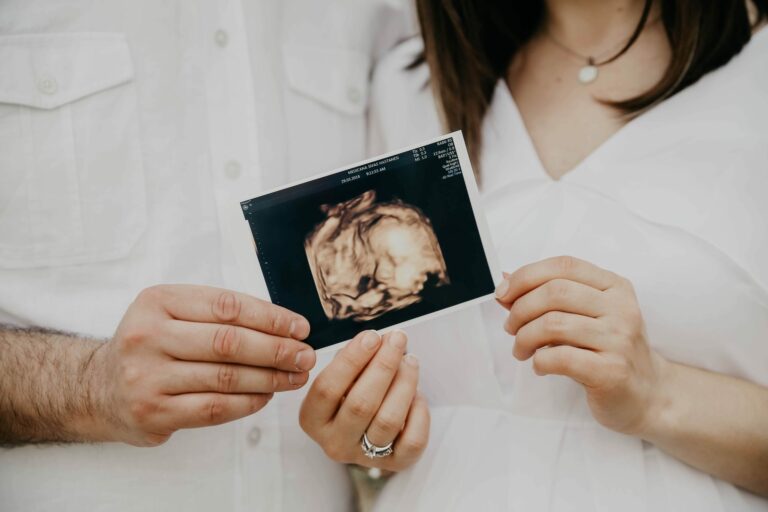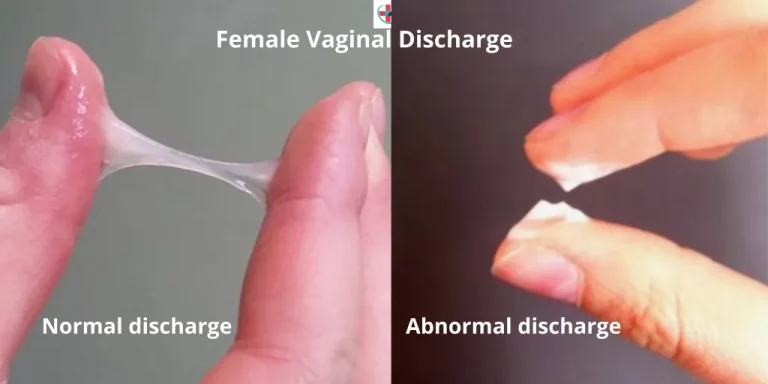Which treatment is best for infertility?
Table of contents
Infertility treatment is an area of concern among couples who have been trying to conceive. This post will explain the causes of infertility in males and females. It will also talk about infertility treatment options that are available.
What is infertility?
Infertility is defined as the inability to get pregnant, usually after a year of trying; in women over 35 years old, it can also be known as the inability to get pregnant after 6months of trying. You can classify infertility as primary or secondary.
- Primary infertility – this is a term used for a woman who has never been able to get pregnant.
- Secondary infertility – this a term used for women who have had at least one successful pregnancy.
Infertility is not a female problem alone; men can also be infertile.
Causes of infertility in men
Infertility in men can be attributed to the following conditions
- inability to effectively produce sperm
- abnormal shape of sperm cells
- low number or low count of sperm cells
- abnormal or ineffective movement of sperm cells
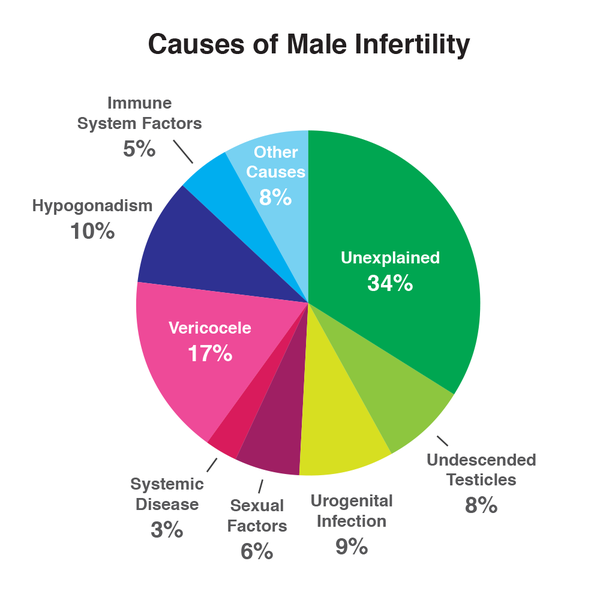
Risk factors
Different conditions predispose men to conditions that affect their fertility. They could be due to self-inflicted factors, habits, medical conditions, or even medication or drugs.
Habits – lifestyle changes can cause infertility in men; some of the practices which can lead to infertility include
- cigarette smoking
- alcoholism
- obesity
- sexually transmitted infections
Medical conditions – some medical issues which can lead to infertility in men include
- varicocele
- cryptorchidism
- low testosterone
- autoimmune diseases where antibodies attack sperm cells
Drugs and medications – various medications and drugs could also affect fertility; some of these drugs include
- chemotherapy
- radiation
- sulfasalazine
- blood pressure medication
- antidepressants
- recreational drugs like cocaine.
Causes of Female infertility
Female infertility could be attributed to factors that may inhibit the following processes
- ovulation
- fertilization
- implantation
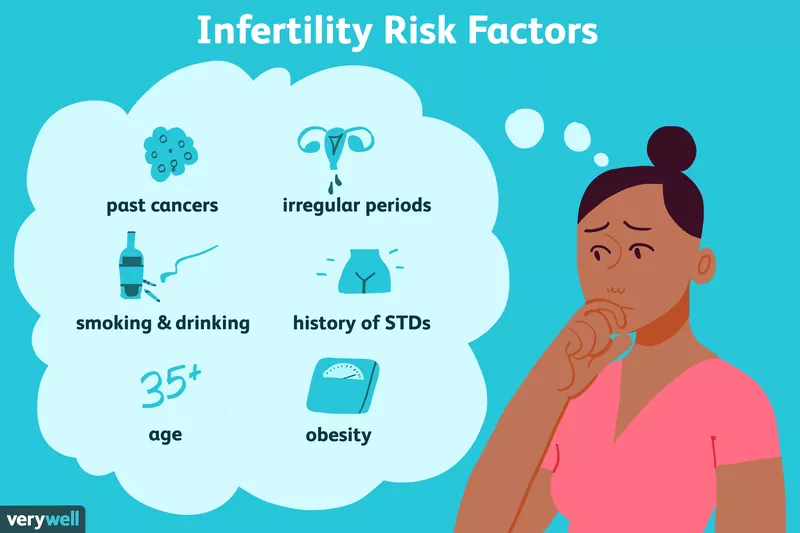
The above processes could be inhibited by some complications, which range from natural processes like aging to habits, medical conditions, and even medication and drugs.
Habits – some of the conditions or habits which have debilitating effects on fertility include
- smoking of cigarettes
- alcoholism
- obesity
- sexually transmitted infections
Medical conditions – some medical conditions in females which can affect fertility include
- ovulation disorders
- hormonal imbalances
- uterine fibroids
- uterine scarring
- pelvic inflammatory disease
Medication and drugs – Some medications could have a negative effect on fertility; some of these drugs include
- chemotherapy
- radiation
- recreational drugs like cocaine
- antidepressants
Treatment for infertility
There are different types of treatment for infertility, the type of treatment recommended usually depends on the cause of infertility, the age of the couple, the general health condition of the couple, preferences of the couple, and the length of time the couple had been trying to conceive.
The best or the most successful type of infertility treatment for males and females are as follows.
Males
The most effective treatment usually begins with a diagnosis of the cause of infertility in the individual, a health care provider may ask about the individual’s sexual habits, medical history, and drugs being taken. The health care provider may then perform some physical tests. Any abnormality on the tests may lead to further or a closer examination of the testicles and penis to check for any irregularities. Also, the doctor may require that the following tests be carried out.
Semen analysis which determines the following
- sperm volume
- pH of sperm
- concentration of sperm
- total sperm count
- velocity
- morphology
- viscosity
- color
- linearity
A more detailed test may be carried out, which includes viability, morphology, and motility of the sperm cells.
Blood – the individual’s blood is tested for levels of important hormones like testosterone and others.
Ultrasound – this might reveal issues such as obstruction of any of the structures and retrograde ejaculation.
STI tests – this scans the individual for any infections that might affect fertility, like Chlamydia, gonorrhea, etc. At the same time, treatment will handle the infections, and existing damage to fertility may not be so easily reversed.
After diagnosis, a number of treatment options may be provided to address infertility; treatments may include
- hormone therapy
- antibiotics therapy
- lifestyle changes
- surgeries
- intracytoplasmic sperm injection
- in vitro fertilization
Females
As seen in males, a sound diagnosis is usually the first step in the treatment of infertility. Females undergo physical examinations where the doctor will enquire about their medical history, medication, sexual activity, and their menstruation cycle. A thorough gynecological examination will also be carried out. Some of the tests done include
Blood tests – this assesses hormone levels and the stage of the menstrual cycle the female is in.
Ultrasound – this is done to produce an image of the uterus and ovaries
Thyroid function test – this is done in order to examine its effect on hormonal balance
Hysterosalpingography – this is a technical test carried out by specialized technicians where a fluid is injected into the uterus, and an x-ray is taken to determine if the fluid travels freely through the uterus and into the fallopian tubes. If any obstruction is revealed, surgery may be required.
Laparoscopy – this is the visualization of the abdomen and pelvis. It is done by inserting a thin, flexible tube with a camera attached at its end into the abdomen. This allows the doctor to look at the uterus, the fallopian tubes, and the ovaries. This can reveal various abnormalities like scarring, blockages, endometriosis, and other irregularities in those structures.
Ovarian reserve testing – this is carried out to count the eggs in the ovary after ovulation.
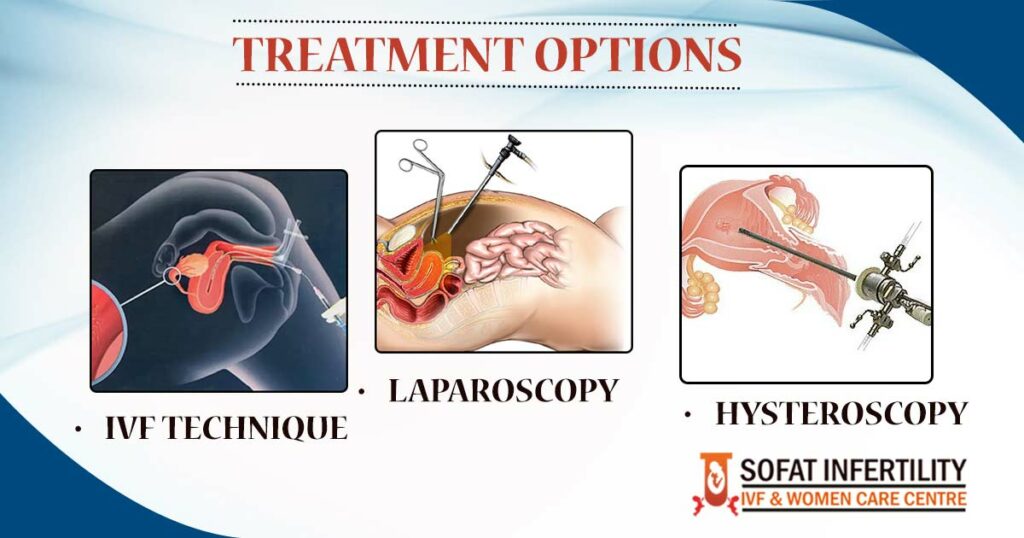
After a diagnosis has been done, a number of treatment options may be recommended, which include
- surgery
- intrauterine insemination
- fertility drugs that induce or regulate ovulation
- hormone therapy
- antibiotics therapy
- IVF
While all the above-listed treatments are designed to achieve conception and pregnancy, the treatment that is usually the most successful for most infertility cases is In vitro fertilization (IVF).
IVF
This is one of the most successful treatments for infertility; it has the ability to address different fertility problems which may affect men and women. It is usually a last resort when most other treatments have failed, though sometimes it is usually advised as the first-course treatment because of its effectiveness. Depending on the previous treatments, the doctor may recommend some procedures to boost the chances of the success of the IVF. Some of these procedures may include
- Donor eggs or donor sperm
- Egg hatching
- Pre-implantation genetic diagnosis
Although IVF is regarded as the most successful treatment for infertility, it is not successful in all cases. Sometimes, even with couples who are great candidates for the procedure, it does not work. Some of the factors that may affect its success include
- The number of barriers to fertility present in both couple
- Age of the couple
- The skill of the doctor
- History of recurrent miscarriages
IVF, however, is also not without risks; some risks that may be encountered with the procedure include
- Multiple births
- Premature delivery or low birth weight
- Miscarriage
- Ectopic pregnancy
- Birth defects
- Cancer
- Stress
- Egg-retrieval complications
Procedure
IVF includes several steps: ovarian stimulation and egg retrieval, sperm retrieval, and fertilization. One cycle of IVF may take from two to three weeks, and sometimes, more than one cycle is needed.
Ovulation induction – This is usually the beginning of an IVF cycle; synthetic hormones are used to stimulate the ovaries to produce multiple eggs rather than a single egg which typically develops each month. Typically, one or two weeks of stimulation are needed before the eggs are ready for retrieval. Sometimes, the IVF cycle may be canceled for one or more of the following reasons
- Inadequate number of follicles developing
- Premature ovulation
- Too many follicles developing
- Other medical issues
Egg retrieval – It is usually done 34-36 hours after the final injection and before ovulation. Sedation is required for the retrieval, and transvaginal ultrasound aspiration is usually the retrieval method. If the ovaries are not accessible through the transvaginal ultrasound, an abdominal ultrasound may be used to guide the needle. Mature eggs are then placed in a nutritive liquid (culture medium) and incubated. The eggs which appear healthy will be mixed with sperm to attempt to achieve fertilization and embryo creation. However, not all eggs are successfully fertilized.
Sperm retrieval – a semen sample usually needs to be provided on the morning of the egg retrieval. This can be done by masturbation or other methods like testicular aspiration. Donor sperm can also be used. Sperm is then separated from semen in the lab.
Fertilization – this can be achieved using two common methods:
- Conventional insemination is where mature eggs and healthy sperm mix and are incubated overnight.
- Intracytoplasmic sperm injection, where a single healthy sperm is injected directly into the egg.
Embryo transfer – this is usually done 2-5 days after fertilization. A long, thin, and flexible catheter is inserted into the uterus through the vagina. Attached to the catheter’s end is a syringe that contains one or more embryos in small amounts of fluid. The embryos are then placed into the uterus through the syringe. If successful, an embryo will implant o the lining of the uterus about 6-10 days after the egg retrieval.
“Medical Advice Disclaimer:
DISCLAIMER: THIS SITE DOES NOT PROVIDE MEDICAL ADVICE OR OPINION:
The information provided in this article or website by way of text, illustration, graphics, Images or any other form in this article or website is provided for informational purposes only. No information or material provided on this site is meant to be a substitute for a professional medical advice. Please refer to your family doctor or specialist in that field for any medical condition, diagnosis and treatment. Do not delay in contacting a professional on account of something you have read in this article or on this website.”
The information provided in this blog is for educational purposes only and should not be considered as medical advice. It is not intended to replace professional medical consultation, diagnosis, or treatment. Always consult with a qualified healthcare provider before making any decisions regarding your health. Read more

